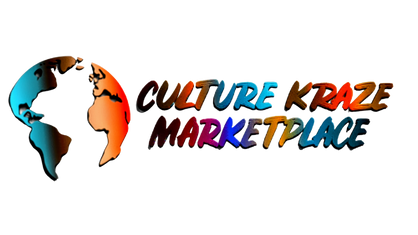
Éire: How The Irish Made Their Own Luck and Exported it Across the World
Perhaps the most romanticized land in Europe, the isle of Ireland seems like a magical place, home to amazing natural landscapes, wildlife, and a very long folk tradition, boasting the oldest vernacular literature in all of Europe. Whether its the four leaf clover and the famed luck of the Irish, the love for drink, celebration and life, St. Patrick's Day, a pint of Guinness, leprechauns, James Joyce or U2, Ireland, for a tiny nation of less then five million people, has undoubtedly had an outsized impact on the world, in no small measure owing to its vast global diaspora.

From the Land of Saints and Scholars! This Éire T-shirt comes in all colors and sizes!
For most of its history, Ireland has been Gaelic, a heritage that deeply influences the island even today, and syncretized to an appreciable degree with the advent of Christianity. The Gaelic culture of Ireland has seen important outside influences though, and made Ireland quite the cosmopolitan destination, having been heavily influenced by England, Scotland, mainland Europe, and even the New World! Ireland has had an incredibly dynamic, and very difficult, history, which likely goes some way towards explaining the hardiness and perseverance that is frequently associated with the Irish. In fact, if anything, the Irish people have been decidedly short on the luck that is so famously associated with them, from the days of their success in the gold and silver rushes of 1800s America. Since about 800 AD, Ireland has been mired in conflict, both between domestic rivals and foreign aggressors. Having prevailed after long struggles against the Vikings and Normans, Ireland eventually fell to its far larger and more powerful neighbor Britain, which often ruled the island with an iron fist. But what they lacked in luck, the Irish made up in tenacity, refusing to be broken by foreign domination through more than three hundred long years.

The perfect keychain doesn't exi-
Life on the island remained hard until very recently, with the 20th century infamous for the "The Troubles", a decades-long guerilla conflict with Britain over the territory of Northern Ireland, ended only by the Good Friday Agreement in 1998. Yet, almost paradoxically, Irish culture has flourished almost continuously through this time, and the Irish have never lost their love of life, dominated by a vibrant pub culture, love of sports and the outdoors, and widespread cultural events drawing large attendance from the people! Public houses in Ireland are important venues for socialization, and many still retain their traditional charm alongside the more modern locations, and many Irish will turn out in large numbers for a game of Gaelic football, hurling, or rugby.

5 piece Ireland flag on brick canvas prints. The perfect backdrop for any Hibernophile!
Nor is Ireland shy about its massive cultural influence across the globe, with an active and vocal diaspora ready to act as brand ambassadors for what is, quite honestly, a very fun culture! In fact, the Irish have an almost uncanny ability to syncretize with other cultural traditions, and export their own. Perhaps the best known example of this is Halloween. But others abound. For instance, leprechauns are now known and beloved practically the world over, and the Irish traditional music is known and heard the world over as a result of its incorporation by rock artists such as Van Morrison and The Corrs. It is likely that this practice dates all the way back to the rise of Insular Art, the Celtic fusion with Christianity that grew out of the Irish Monastic tradition and spread across Ireland and Great Britain. Perhaps the best known form is the Celtic knot, which adapted interlace patterns that had been popular in the Roman Empire with Ireland's own native spiral, step and key patterns. By the 8th century, the Celtic knot made extensive appearances on Christian monuments and manuscripts, such as the Lindisfarne Gospels. Today, they are widely seen as markers of national identity by Celtic people.

This women's pendant boasts an intricate Celtic knot in a flower pattern fashioned out of silver, and comes complete with an 18 inch chain!
The modern Republic of Ireland has truly forged its own luck. A traditionally poor nation that was the victim of a long period of imperialism, followed by decades-long conflict after independence, Ireland was in poor shape in the 1990s, its economy characterized by low growth, high poverty, unemployment and inflation by Western European standards. But almost coinciding with the end of conflict with Britain was a remarkable period of economic growth, the start of the "Celtic Tiger" period, by the end of which Ireland had emerged as one of the wealthiest nations in Western Europe. Apart from creating a pro-business regulatory environment, the Irish government has also pursued a highly proactive foreign policy, frequently leveraging Ireland's massive cultural heft to gain a surprisingly loud voice for such a small nation. After all, as a famous writer of Celtic descent once said, it's not the size of the dog in the fight, it's the size of the fight in the dog!
References:
- http://www.celtarts.com/celtic_interlace.htm
- https://www.thinkythings.org/knotwork/knotwork.html
- http://www.bbc.co.uk/religion/religions/paganism/holydays/samhain.shtml
- https://www.economist.com/europe/2020/07/18/how-ireland-gets-its-way
- https://www.irelandbeforeyoudie.com/the-luck-of-the-irish-the-real-meaning-and-origin/
- https://emerald-heritage.com/blog/2017/8-things-ireland-is-famous-for

Leave a comment